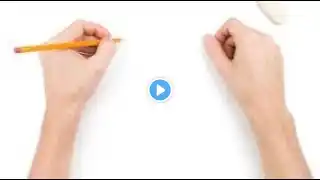
Why Are Some People Ambidextrous?
. Chapters 0:00 Introduction 0:22 What does it mean to be ambidextrous? 0:50 What causes people to be ambidextrous 1:48 How many people are ambidextrous 2:16 Risks of being ambidextrous Ambidexterity is the ability to use both the right and left hand equally well.[1][2] When referring to objects, the term indicates that the object is equally suitable for right-handed and left-handed people. When referring to humans, it indicates that a person has no marked preference for the use of the right or left hand. Only about one percent of people are naturally ambidextrous, which equates to about 70,000,000 people in the world. [3] In modern times, it is common to find some people considered ambidextrous who were originally left-handed and who learned to be ambidextrous, either deliberately or as a result of training in schools or in jobs where right-handed habits are often emphasized or required.[citation needed] Since many everyday devices (such as can openers and scissors) are asymmetrical and designed for right-handed people, many left-handers learn to use them right-handedly due to the rarity or lack of left-handed models. Thus, left-handed people are more likely to develop motor skills in their non-dominant hand than right-handed people. Ambidexterity is highly prized in the sport of baseball. "Switch hitting" is the most common phenomenon, and is highly prized because a batter usually has a higher statistical chance of successfully hitting the baseball when it is thrown by an opposite-handed pitcher. Therefore, an ambidextrous hitter can bat from whichever side is more advantageous to them in that situation. Pete Rose, who had more hits than anyone else in the history of Major League Baseball, was a switch hitter.[10] Switch pitchers, comparatively rare in contrast to switch hitters, also exist. Tony Mullane won 284 games in the 19th century.[11][12] Elton Chamberlain and Larry Corcoran were also notable ambidextrous pitchers. In the 20th century, Greg A. Harris was the only major league pitcher to pitch with both his left and his right arm. A natural right-hander, by 1986 he could throw well enough with his left hand that he felt capable of pitching with either hand in a game. Harris was not allowed to throw left-handed in a regular-season game until September 1995 in the penultimate game of his career. Against the Cincinnati Reds in the ninth inning, Harris (then a member of the Montreal Expos) retired Reggie Sanders pitching right-handed, then switched to his left hand for the next two hitters, Hal Morris and Ed Taubensee, who both batted left-handed. Harris walked Morris but got Taubensee to ground out. He then went back to his right hand to retire Bret Boone to end the inning. In the 21st century there is only one major league pitcher, Pat Venditte of the Seattle Mariners, who regularly pitches with both arms. Venditte became the 21st century's first switch pitcher in the major leagues with his debut on June 5, 2015, against the Boston Red Sox, pitching two innings, allowing only one hit and recording five outs right-handed and one out left-handed. During his career, an eponymous "Venditte Rule" was created[13] restricting the ability of a pitcher to change arms in the middle of an at-bat.[14] Billy Wagner was a natural right-handed pitcher in his youth, but after breaking his throwing arm twice, he taught himself how to use his left arm by throwing nothing but fastballs against a barn wall. He became a dominant left-handed relief pitcher, most known for his 100+ mph fastball. In his 1999 season, Wagner captured the National League Relief Man of the Year Award as a Houston Astro. St. Louis Cardinals pitcher Brett Cecil is naturally right-handed, but starting from a very early age, threw with his left. As such, he writes and performs most tasks with the right side of his body, but throws with his left. Basketball In basketball a player may choose to make a pass or shot with the weaker hand. NBA stars Kyrie Irving, Carlos Boozer, David Lee, John Wall, Derrick Rose, Chandler Parsons, Andrew Bogut, John Henson, Michael Beasley, and Jerryd Bayless are ambidextrous players, as was Kobe Bryant. Bogut and Henson are both stronger in the post with their left-handed hook shot than they are with their natural right hands. Brothers Marc and Pau Gasol can make hook shots with either hand while the right hand is dominant for each. Bob Cousy, a Boston
















